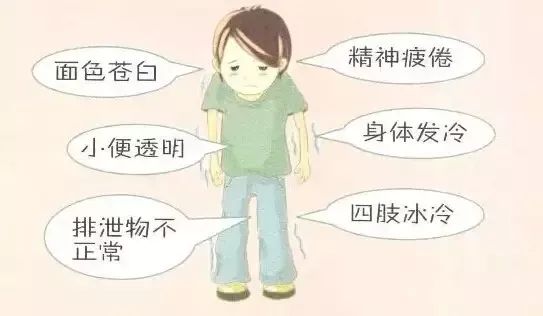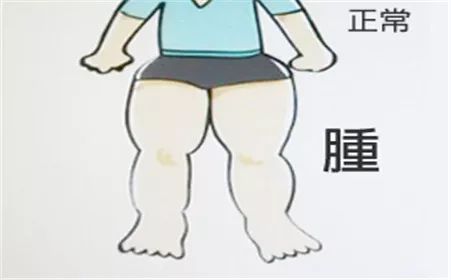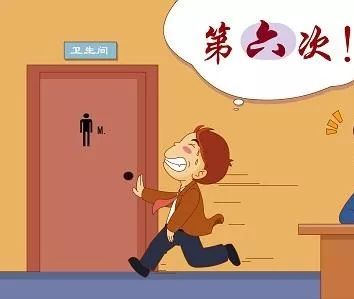What is Kidney Yang Deficiency Syndrome?
Kidney Yang Deficiency is a syndrome characterized by a series of symptoms resulting from the deficiency of Yang Qi in the kidneys. The specific manifestations include lower back and leg pain, coldness in the limbs, fatigue, female infertility, male infertility, diarrhea, swelling of the limbs, and frequent urination. Below, each symptom will be discussed in detail.

 1
1
Individuals with Kidney Yang Deficiency often experience significant lower back and leg pain, accompanied by soreness and weakness. The lower back is the residence of the kidneys; thus, when there is a problem with the kidneys, it is easily felt in the lower back. The kidneys govern the bones, and with insufficient Kidney Yang, the bones throughout the body lack nourishment. Among all bones, the lower limbs bear the most weight and strain, hence they are the first to exhibit pain.

2
Individuals with Kidney Yang Deficiency exhibit obvious signs of coldness. Kidney Yang is fundamental to the Yang Qi of all organs and meridians in the body. When Kidney Yang is deficient, the entire body cannot be warmed, leading to coldness in the limbs and a fear of cold. Since the kidneys are located in the lower jiao (lower abdomen), when Kidney Yang is insufficient, the coldness in the lower limbs and feet becomes particularly pronounced.

3
With insufficient Kidney Yang, the heart’s Yang and Qi are also affected, leading to mental fatigue and a decline in cognitive functions such as thinking, understanding, judgment, and reaction. The circulation of Qi and blood is dependent on the warmth and propulsion provided by Kidney Yang. When Kidney Yang is deficient, Qi and blood cannot adequately reach the head and face, resulting in a pale complexion. In severe cases of Kidney Yang Deficiency, the face may even appear dark due to the accumulation of coldness from insufficient Yang.

4
The kidneys govern reproduction, and when Kidney Yang is deficient, a series of reproductive dysfunctions may occur. For men, insufficient Kidney Yang and declining Mingmen fire can lead to atrophy of the genitalia and impotence. For women, Kidney Yang Deficiency can result in coldness in the uterus and infertility.

5
A typical manifestation of Kidney Yang Deficiency is a tendency to have diarrhea. Individuals may find they cannot tolerate cold or low-temperature foods, or they may need to use the restroom urgently in the early morning, otherwise, they will experience unbearable pain. This is due to the inability of Kidney Yang to stimulate and warm the Spleen Yang. Insufficient Spleen Yang leads to a series of digestive symptoms.

6
In older adults, lower limb edema is often related to Kidney Yang Deficiency. The kidneys and bladder are interrelated. The Qi transformation between the kidneys and bladder facilitates the production and excretion of urine. When Kidney Yang is insufficient, the ability of the kidneys and bladder to transform Qi becomes abnormal. Excess water in the body cannot be metabolized and overflows into the skin, resulting in edema. This edema, occurring in the lower limbs, leads to swelling below the waist. If it obstructs the middle jiao, it can cause abdominal distension. If water Qi invades the heart, it can lead to palpitations. If it ascends to the lungs, it can disrupt lung function, resulting in cough and shortness of breath.

7
Kidney Yang Deficiency can also lead to frequent urination, large urine volume, and clear urine color. The body’s fluids are transmitted to the kidneys through the Sanjiao (Triple Burner). Under the influence of Kidney Yang, the kidneys organize these fluids. The clear portion is retained for circulation and absorption, while the turbid portion is excreted as urine. When Kidney Yang is insufficient, the kidneys cannot perform this function, leading to an overflow of fluids into the bladder, resulting in polyuria.

How can we address Kidney Yang Deficiency?
To warm and tonify Kidney Yang, the goal is not to supplement fire excessively, but to gently stimulate it. To tonify Kidney Yang, one must not force growth but rather follow the natural progression of Kidney Yang’s rise. One must seek Yang within Yin and proceed gradually; otherwise, it is akin to forcing growth. To tonify Yang, one must first tonify Yin. Only after tonifying Yin can one proceed to tonify Yang, achieving the goal of nourishing the source of fire to dispel Yin shadows.

